Abstract
Virus can be adsorbed from effluents of sewage treatment plants on large-surface membranes. Subsequent elution of virus requires large volumes, which in turn requires reconcentration of virus for assay. However, reconcentration of such viral eluates on small adsorbent surfaces is difficult because certain soluble sewage components are adsorbed along with the virus on the initial virus adsorbent and are removed along with the virus by the eluent. Upon acidification of the initial eluate to reconcentrate the virus on smaller membrane surfaces, flocs are formed that interfere with the reconcentration process. To circumvent this problem, the interfering sewage components can be removed by activated carbon and ion-exchange resins. The virus is then readily reconcentrated on small membranes.
Full text
PDF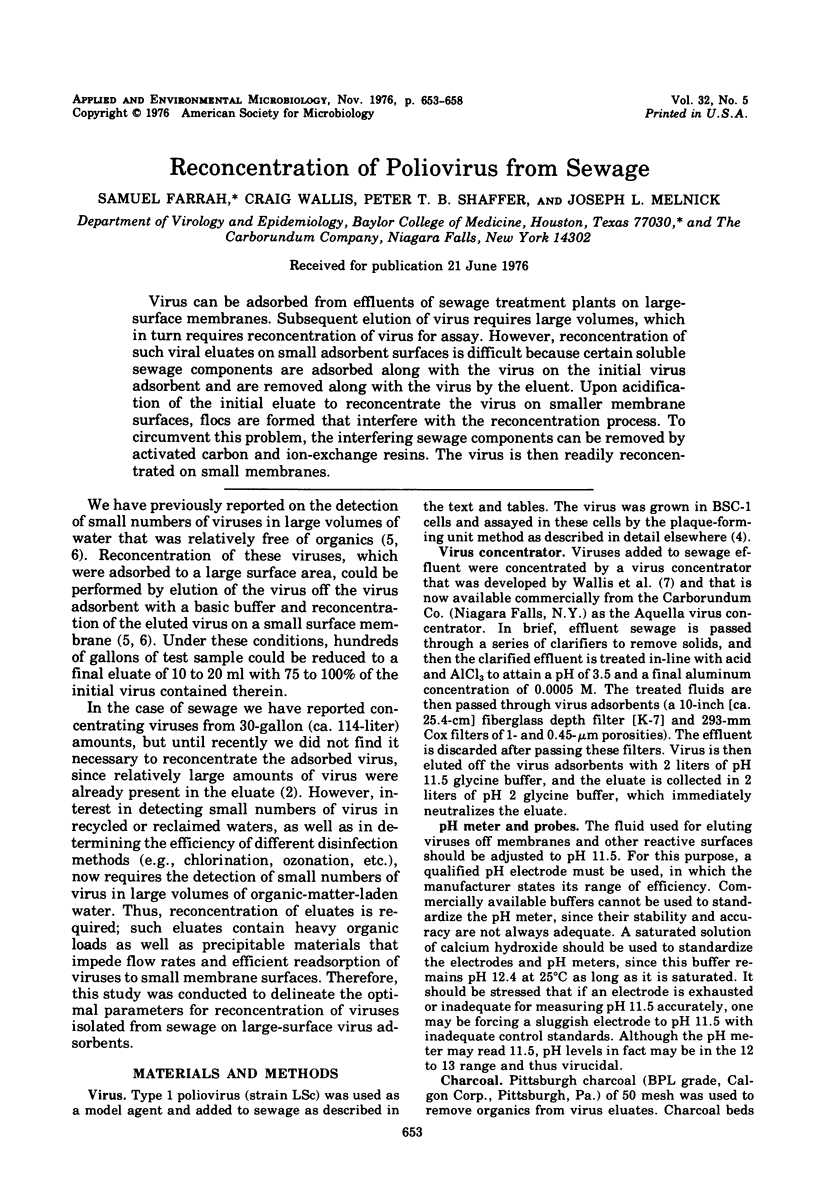
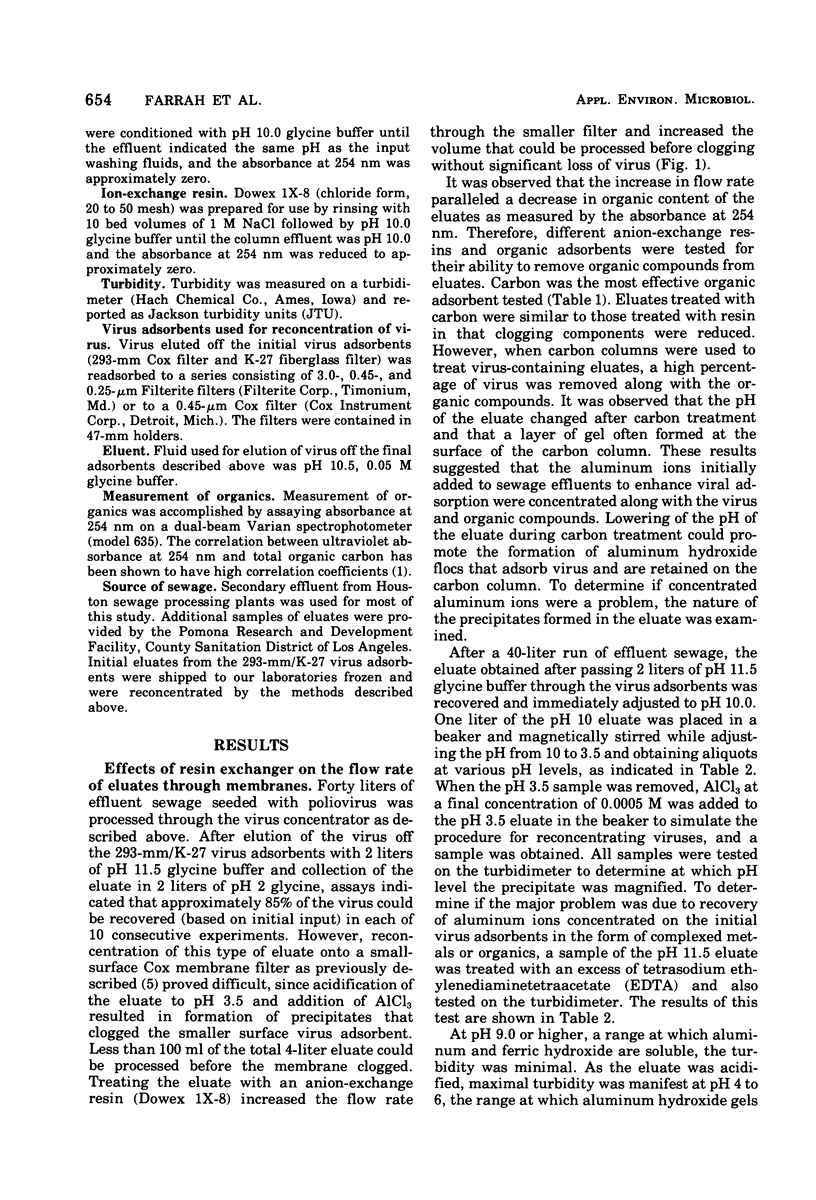
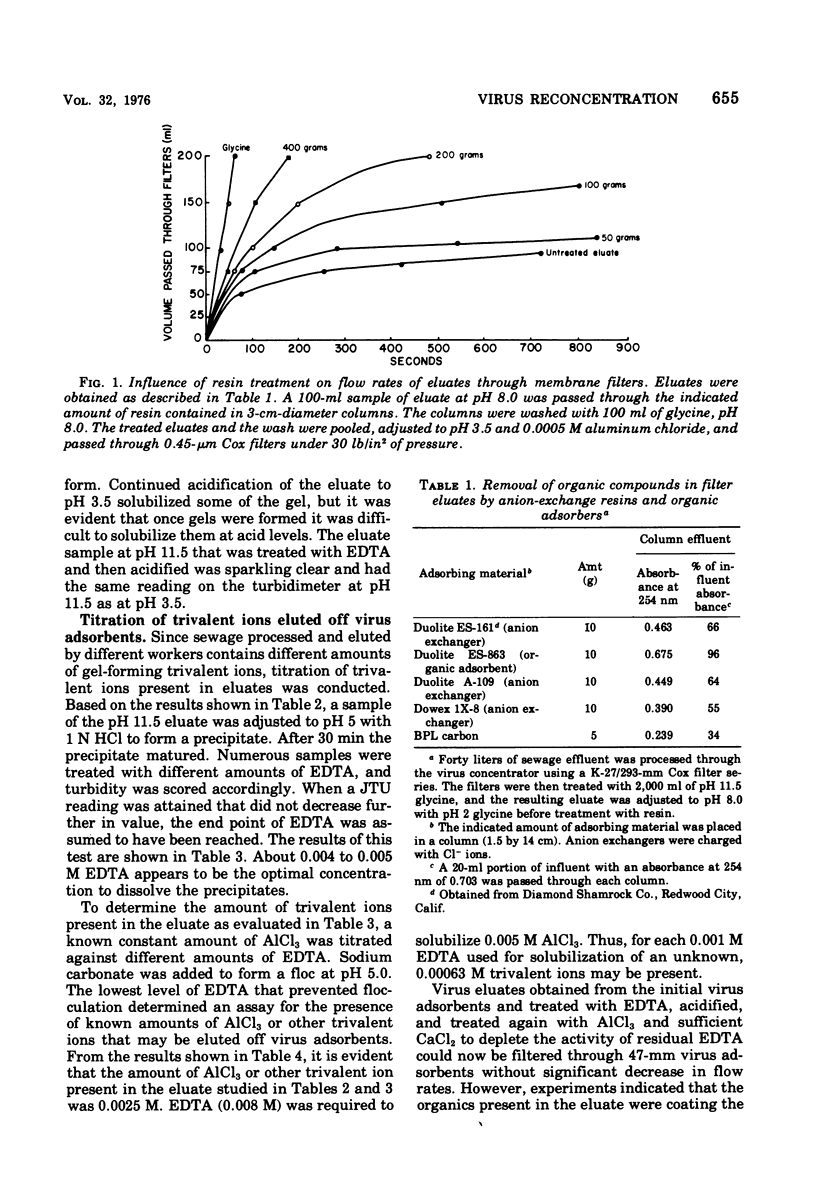
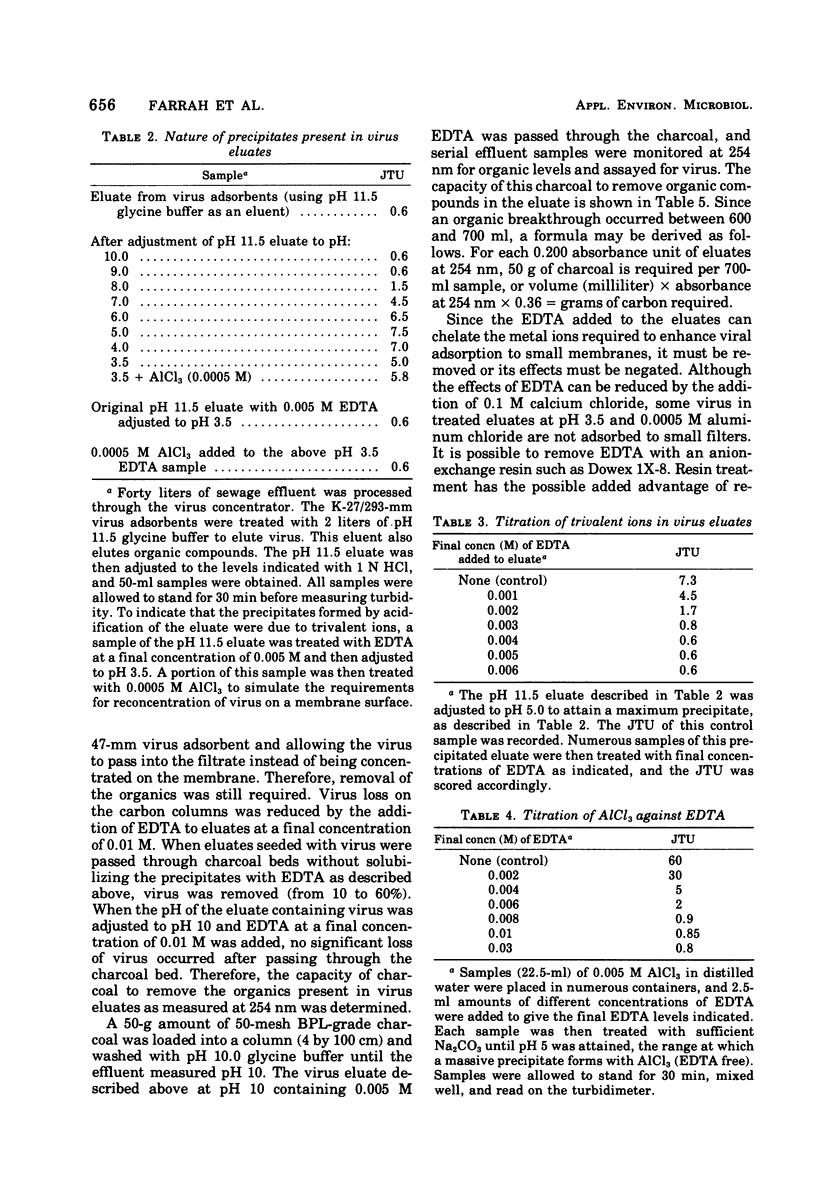
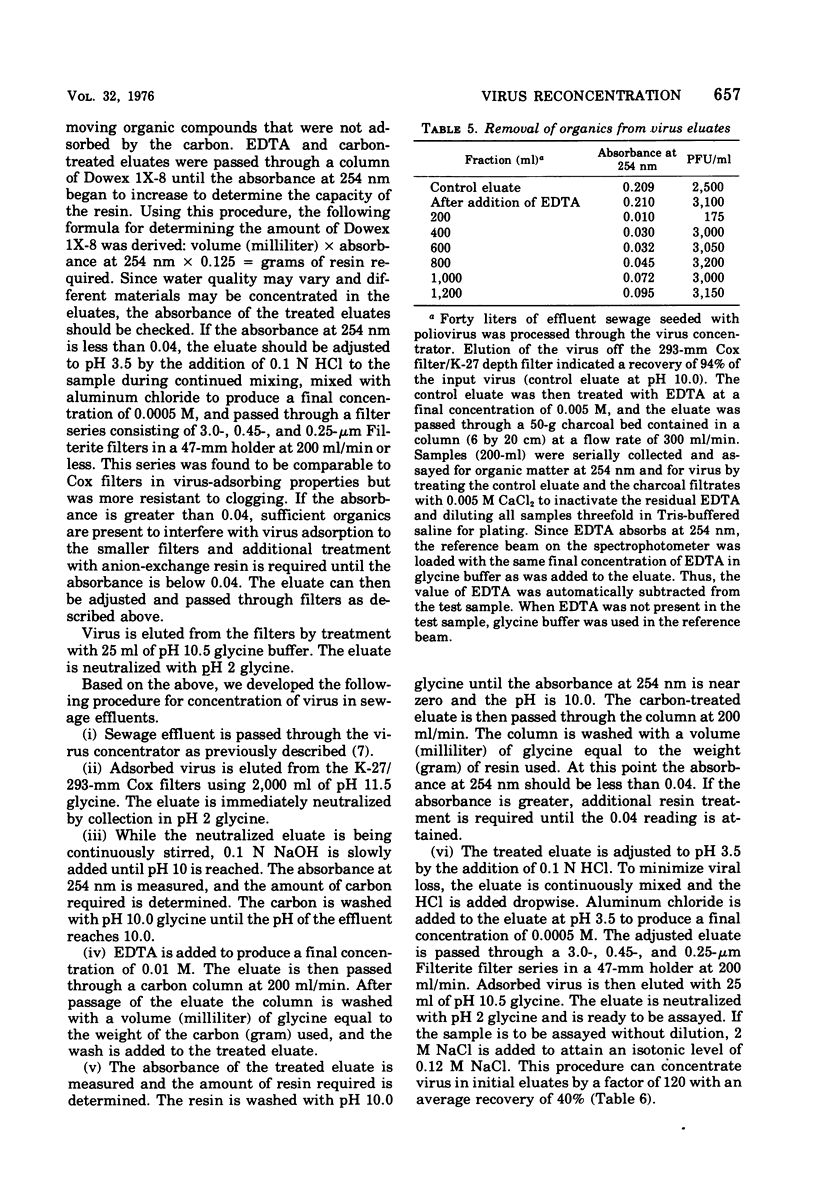
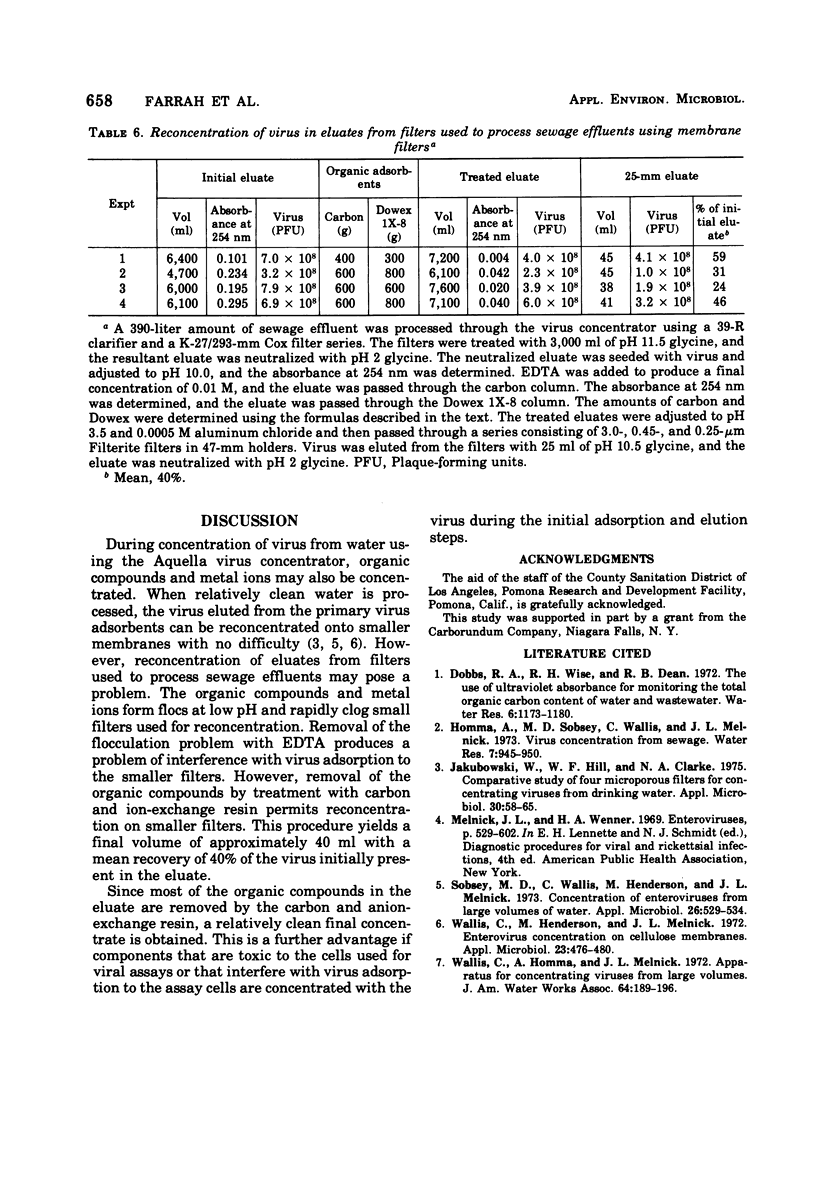
Selected References
These references are in PubMed. This may not be the complete list of references from this article.
- Jakubowski W., Hill W. F., Jr, Clarke N. A. Comparative study of four microporous filters for concentrating viruses from drinking water. Appl Microbiol. 1975 Jul;30(1):58–65. doi: 10.1128/am.30.1.58-65.1975. [DOI] [PMC free article] [PubMed] [Google Scholar]
- Sobsey M. D., Wallis C., Henderson M., Melnick J. L. Concentration of enteroviruses from large volumes of water. Appl Microbiol. 1973 Oct;26(4):529–534. doi: 10.1128/am.26.4.529-534.1973. [DOI] [PMC free article] [PubMed] [Google Scholar]
- Wallis C., Henderson M., Melnick J. L. Enterovirus concentration on cellulose membranes. Appl Microbiol. 1972 Mar;23(3):476–480. doi: 10.1128/am.23.3.476-480.1972. [DOI] [PMC free article] [PubMed] [Google Scholar]


